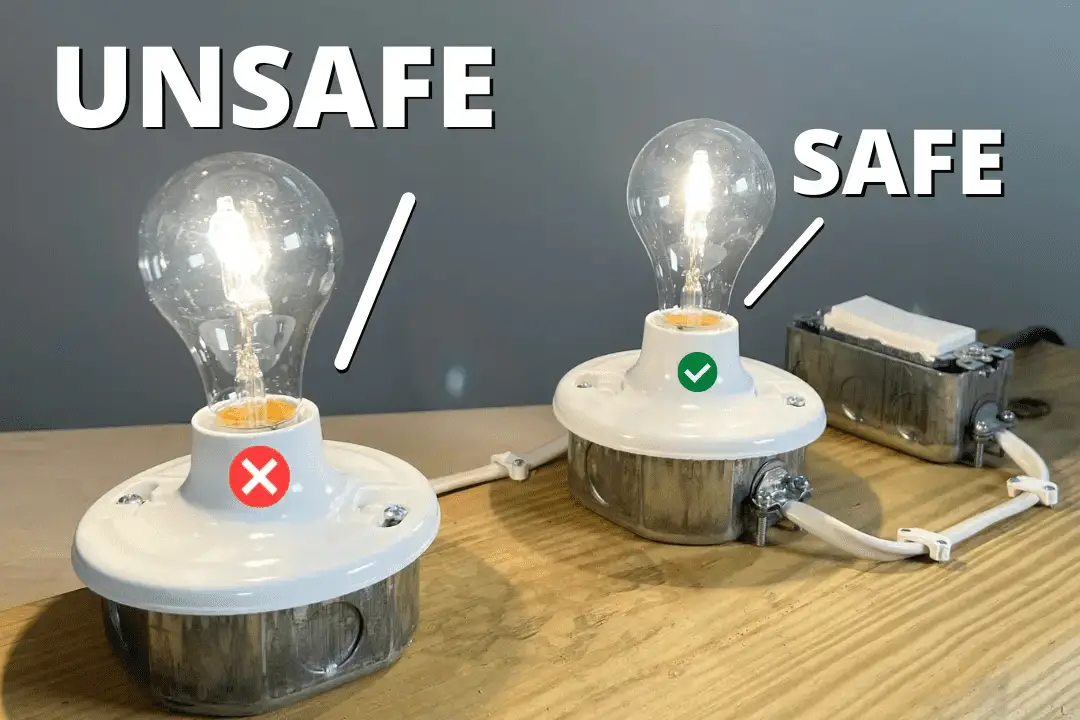It might surprise you to learn that a dangerous wiring situation could be present in your home, even when lights and outlets seem to be working properly. This can happen when the hot and neutral wires to a light or outlet are reversed. By all appearances, everything seems to be fine; appliances and devices function, lights turn on. But reversed polarity creates a safety issue you’ll want to address.
Identifying and remedying reversed hot and neutral wires will not only eradicate the risk of electric shock but will also create a kinder environment for your appliances and devices.
How to Identify Reversed Hot and Neutral Wires: Step-by-Step Guide
In this step-by-step guide, I’ll first demonstrate how reversed polarity at a light fixture or outlet is not obvious to the viewer.
Then, I’ll explain what happens when the hot and neutrals are switched in an electrical circuit, how this creates an environment for getting an electrical shock, and why it can be detrimental to your appliances and devices.
Finally, I’ll walk you through a few simple ways to go around your house to check for a potentially dangerous wiring situation due to reversed hot and neutral wires.
Checking the light fixtures and outlets in your home for correct wiring is a straightforward task any do-it-yourselfer can undertake. With some simple tools and a little knowledge, you can be quickly on your way to peace of mind regarding this important aspect of the electrical wiring in your home.
Rather watch than read? Check out this 9-minute video.
DISCLAIMER: This video and description contain affiliate links, which means that if you click on one of the product links, I’ll receive a small commission.
How to Identify Reversed Hot and Neutral Wires: Tools and Costs
Tools
- Non-Contact Voltage Tester (Klein Tools NCVT-3P)
- Outlet Tester (Klein Tools)
- Digital Multimeter (Klein Tools)
Costs
If you were to buy all three of these devices, you’d spend about $85 (as of Jan 2023).
Reversed Hot and Neutral Wires: An Unapparent Danger
To illustrate the unapparent danger of reversed hot and neutral wires, I’ve wired two lampholders and two duplex outlets. One lampholder and one outlet are wired correctly; the other lampholder and outlet have reversed polarity because I’ve switched the hot and neutral wires.
When I turn on the lampholders, they both light up. When I plug things into the outlets, they both provide power to my device.
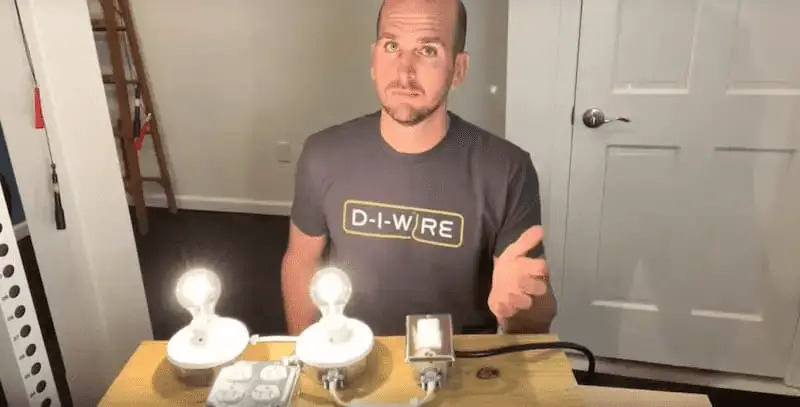
According to appearances, it doesn’t seem that I have a problem — but a safety risk is present where the polarity is reversed.
Reversed Hot and Neutral Wires: What Happens Inside the Circuit
Just in case you’re wondering what the big deal is, seeing as an outlet or light fixture will work with the polarity switched, let’s talk about what happens inside a circuit when the hot and neutral wires are reversed. I’ll use two diagrams to illustrate this.
In both diagrams, we have a circuit with an on/off switch (that looks like a little open door) and some sort of resistive load (indicated by the zig-zag line), such as you’d have with an incandescent lamp or space heater.
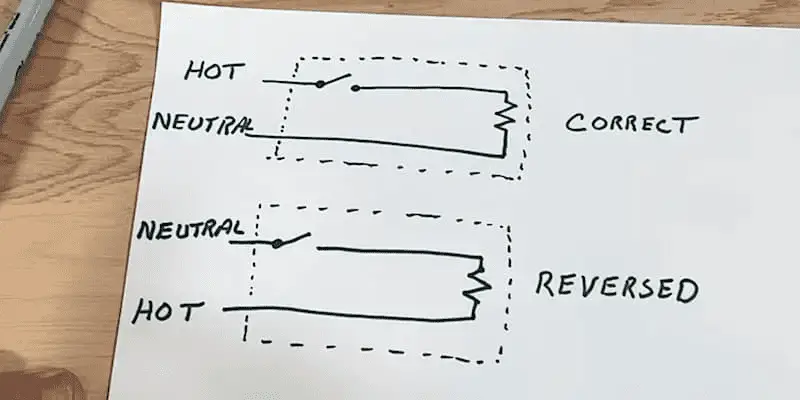
In the top diagram, depicting a correct wiring scenario, the hot wire is bringing power into the device. When the device is switched off, the circuit is interrupted (evidenced by the little “open door”) and no current flows through it. When the device is turned on, the circuit is completed (the “open door” closes) and current can now travel the continuous path through the device and out the neutral side.
In the bottom diagram, where the hot and neutral wires are switched, something quite different happens. Now there is no switch to impede the incoming power at its entry point. Even though the device is switched off, the hot side is still coming in the back door and connected in the opposite direction through the resistive load mechanism, all the way to the switch.
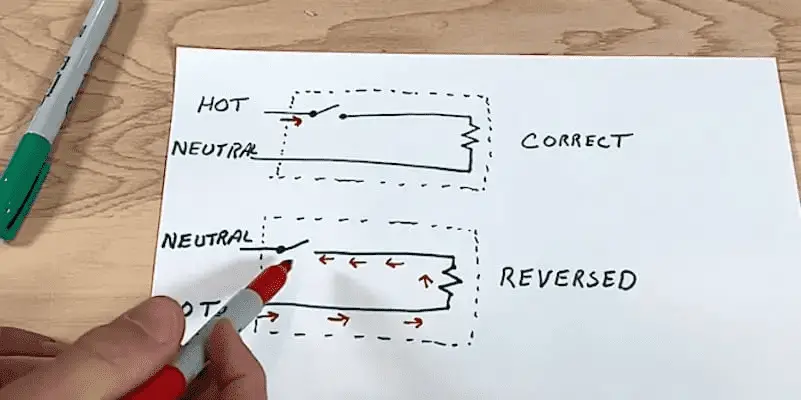
All summed up, we have a device that isn’t on but the potential for electrical current is present; obviously not a good thing. You can also imagine how this constant state of live current could reduce the life of your device.
How to Identify Reversed Hot and Neutral Wires
With a little knowledge and a few simple tools, you can test the lights and outlets in your home for reversed polarity.
Identifying Reversed Hot and Neutral Wires in Outlets
It’s quite easy to tell if an outlet is correctly wired or not, and there are several devices you can use.
The simplest instrument is an outlet tester. The one I rely on is made by Klein Tools.
An outlet tester is great for this job because it doesn’t cost much and will enable you to instantly identify a problem with your wiring, including what specifically is causing it.
There are three lights at the bottom of an outlet tester. When you plug it into the receptacle, these lights will illuminate (or not) according to what’s going on in the circuit. The various combinations of lights on/lights off are listed on the side of the tester with their correlated meaning so that you can quickly determine whether your circuit is safe or not.
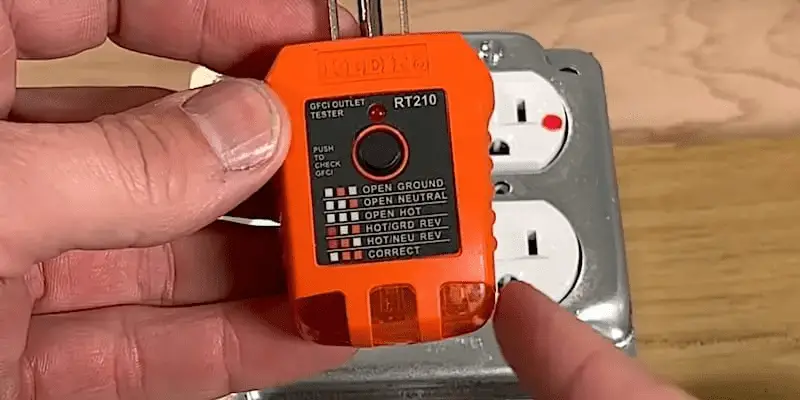
For example, when I insert the outlet tester into the receptacle that I’ve wired correctly, the two orange LEDs light up, corresponding to “CORRECT” on the legend.
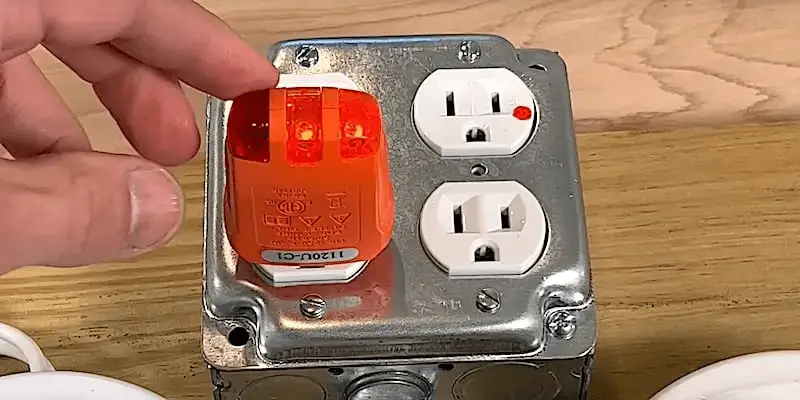
When I insert the outlet tester into the receptacle where I’ve reversed the hot and neutral wires, the red and central orange LEDs illuminate, corresponding to “HOT/NEU REV” on the legend.
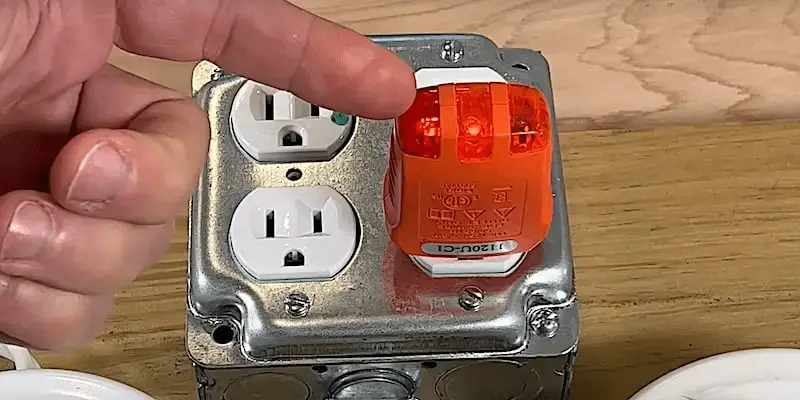
Another way to check for reversed hot and neutral wires is a non-contact voltage tester.
A non-contact voltage tester will beep when it finds the hot side of the circuit.
As we’d expect, when I hold the voltage tester up to the neutral side (wider slot) of the outlet that’s wired correctly, it doesn’t beep.
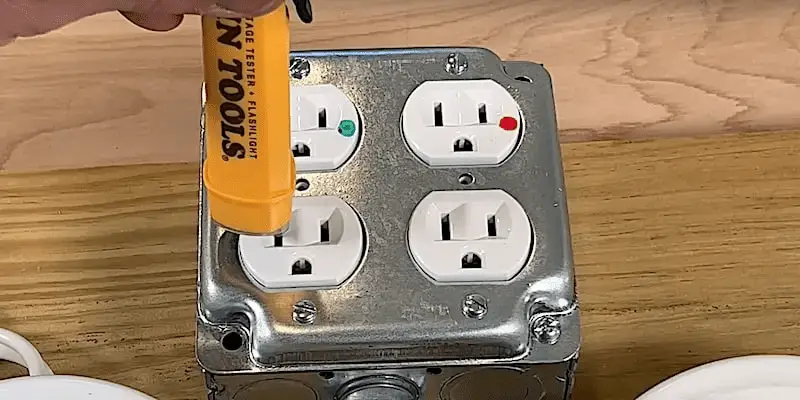
When I move it to the hot side (narrower slot) of my correctly-wired outlet, it beeps as it should.
You’ve probably already guessed that when I do the same test on the side of the outlet with the hot and neutrals reversed, I get the opposite result! The voltage tester beeps when I hold it to the neutral side, indicating power, and doesn’t utter a peep at the hot side, a clear sign that I have a problem.
If we want to get very precise with this testing, a multimeter will come in handy.
To start with the multimeter, I’ll set it to “Voltage AC” and ground the black probe (in my case, by pressing it against the metal box of my outlets, because I know it’s grounded).
To see what voltage I have in each slot of each outlet, I’ll insert the red probe.
On the correctly-wired outlet, I get readings of no voltage on the neutral side and 118 volts on the hot side, as it should be.
On the outlet with the hot and neutral wires reversed, the probe shows the opposite: no voltage on the hot side and 118 volts on the neutral side! Definitely contrary to what it should be.
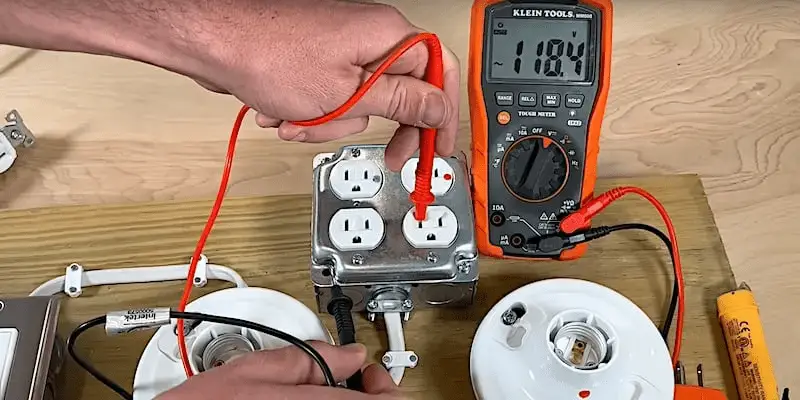
Identifying Reversed Hot and Neutral Wires in Lampholders
Now to use the multimeter to check for reversed hot and neutral wires in my lampholders.
When I put the red probe to the threads of the correctly-wired lampholder, there’s no voltage. That’s because the threads of the lightbulb are connected to neutral and the bottom of the bulb is connected to hot in a properly-wired situation.
But when I put the probe on the threads of the lampholder with hot and neutral reversed, I get 117 volts. If I slightly unscrew the lightbulb (just to the point where the light goes out) and re-test, I still get 117 volts! This is because the threads of the lightbulb and socket are now my hot path.
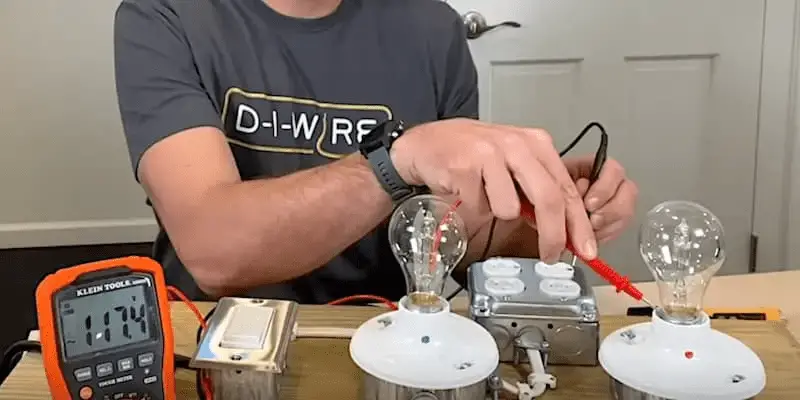
With that much conductive surface area in close proximity to your fingertips, it’s pretty easy to see that you can get a shock when changing a lightbulb. It might not be enough to cause any grave harm, but it could startle or scare you, which might be dangerous if you happen to be on a ladder.
Reversed Hot and Neutral Wires: Conclusion
I’d say that reversed polarity at a light fixture is one of the most common unsafe electrical conditions in a home. And it can be lurking there in plain sight, but now you have the knowledge to scan your home for this issue, as well as reversed hot and neutral wires in your outlets.
If you’re new to electrical wiring, this is a great place for a do-it-yourselfer to start. By resolving this straightforward safety issue, you’ll build up your confidence and skills so that you can take on bigger electrical projects.
Other Electrical-Related Videos and Articles
- Electrical Outlet Basics (video)
- 10 Things You Didn’t Know About Outlets (video)
- 21 Facts and Features of a Standard Outlet (article)
- Dangers of Speed Wiring | Why Back Wiring an Outlet is Best (article)
To Leave Comments and Questions
Your feedback helps to sculpt future videos and articles! Please feel free to leave comments about your situation or experiences under the YouTube video. I check the comments daily.
Don’t forget to subscribe to our channel as we have weekly videos coming out to help you with your everyday home repairs.
We’ll catch you on the next one! Take care
